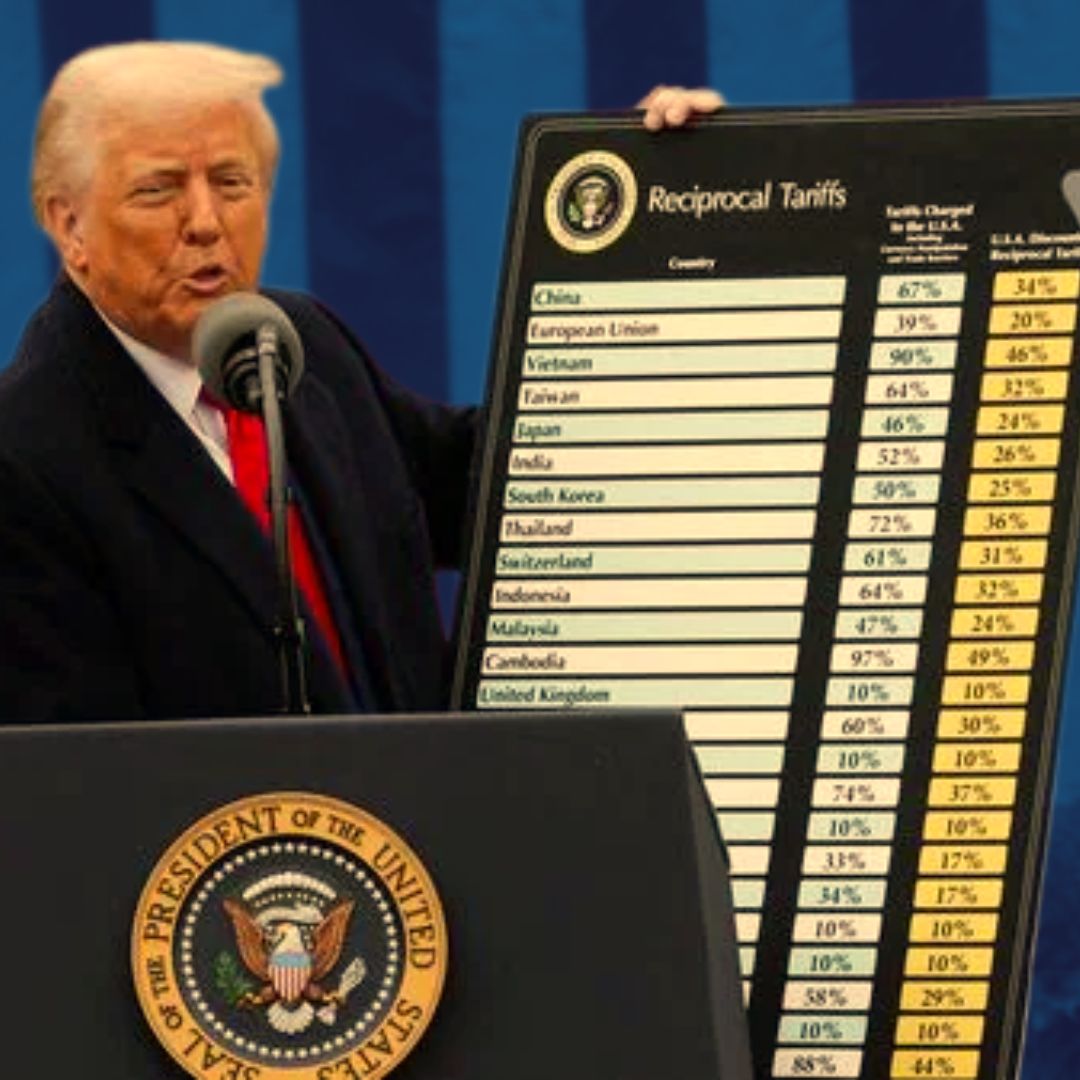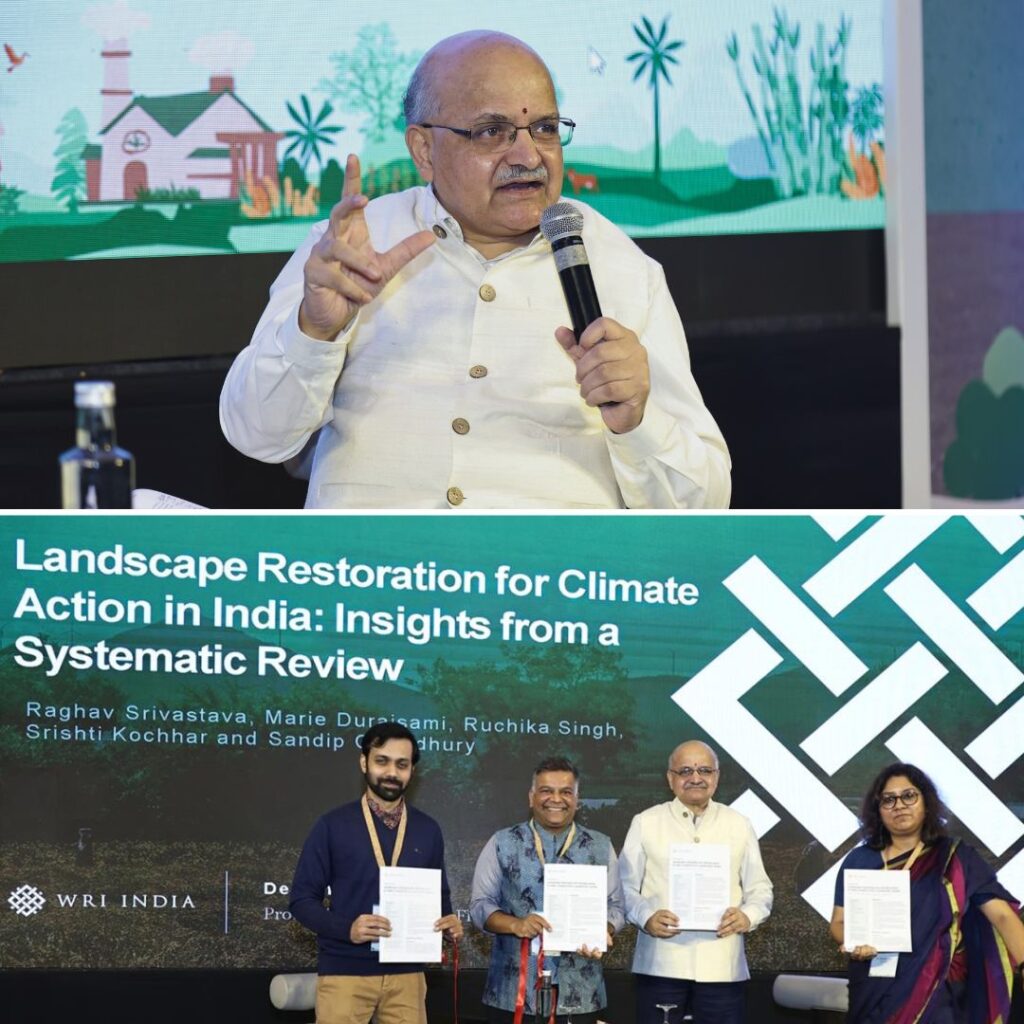The United States has imposed a 26% reciprocal tariff on Indian imports, effective April 9, as part of President Donald Trump’s trade strategy to address the $46 billion trade deficit. Announced during his ‘Liberation Day’ speech, Trump justified the move by citing India’s high import tariffs on American goods, which he claimed go up to 52%.
Key Indian sectors, including auto, pharmaceuticals, IT, and gems & jewellery, are expected to be significantly affected. While India is reviewing the impact and considering tariff reductions on $23 billion worth of US imports, ongoing bilateral trade talks may shape the future of relations between the two nations.
Impact on Trade Relations
The tariffs are set to disrupt India’s exports to the US, which account for nearly 18% of its total goods exports. Sectors such as electronics ($6.5 billion), gems & jewellery ($8.5 billion), and pharmaceuticals are likely to face steep challenges.
Market analyst Ankur Sharma highlighted that companies like Tata Motors and Sona Comstar have already experienced stock declines following the announcement. Trump defended the tariffs as “discounted reciprocal,” aiming to level the playing field between the two nations. Indian officials described the situation as a “mixed bag,” noting that while certain industries face hurdles, others may adapt depending on negotiations.
Economic Impact: Costs and Adjustments
A report by India Ratings and Research warns that India’s exports to the US could drop by $2 billion to $7 billion in FY 2025-26 due to these tariffs. Devendra Kumar Pant, Chief Economist at Ind-Ra, estimated a potential reduction in GDP growth by 5-10 basis points from the current projection of 6.6%.
To ease trade tensions, India has already reduced tariffs on items such as high-end motorcycles (from 50% to 30%) and bourbon whiskey (from 150% to 100%). Additionally, India has ramped up energy imports from the US and purchased more defence equipment as part of broader negotiations.
Background: Bilateral Trade Talks
India and the US are in active discussions to finalise a bilateral trade agreement (BTA) by late 2025, aiming to double two-way trade to $500 billion by 2030. Experts suggest that India’s diversified export base and growing partnerships with other nations could help cushion some of the impact.
However, analysts warn that prolonged tariffs could lead India to explore alternative trade blocs or retaliatory measures. The US has previously targeted other nations like Canada and China with similar tariffs, but this marks a significant shift in its approach toward India.
The Logical Indian’s Perspective
The imposition of these tariffs underscores the delicate balance between economic interests and global cooperation. While they may pressure India into expediting a trade deal with the US, they also highlight the importance of fair dialogue in resolving disputes.
The Logical Indian advocates for peaceful negotiation and mutual respect in international trade relations. As India faces these challenges, we ask: Can nations work together to address trade imbalances without resorting to measures that risk economic harmony? Let us know your thoughts!
BREAKING: This is Horrific!
— Ed Krassenstein (@EdKrassen) April 2, 2025
Trump just announced the following Tariffs for the following countries and a 10% baseline tariff on all others not listed.
China – 34%
EU – 20%
Vietnam – 46%
Japan – 24%
Taiwan – 32$
India – 26%
Thailand – 36%
South Korea – 25%
Switzerland – 31%… pic.twitter.com/v8FySoDJeO











